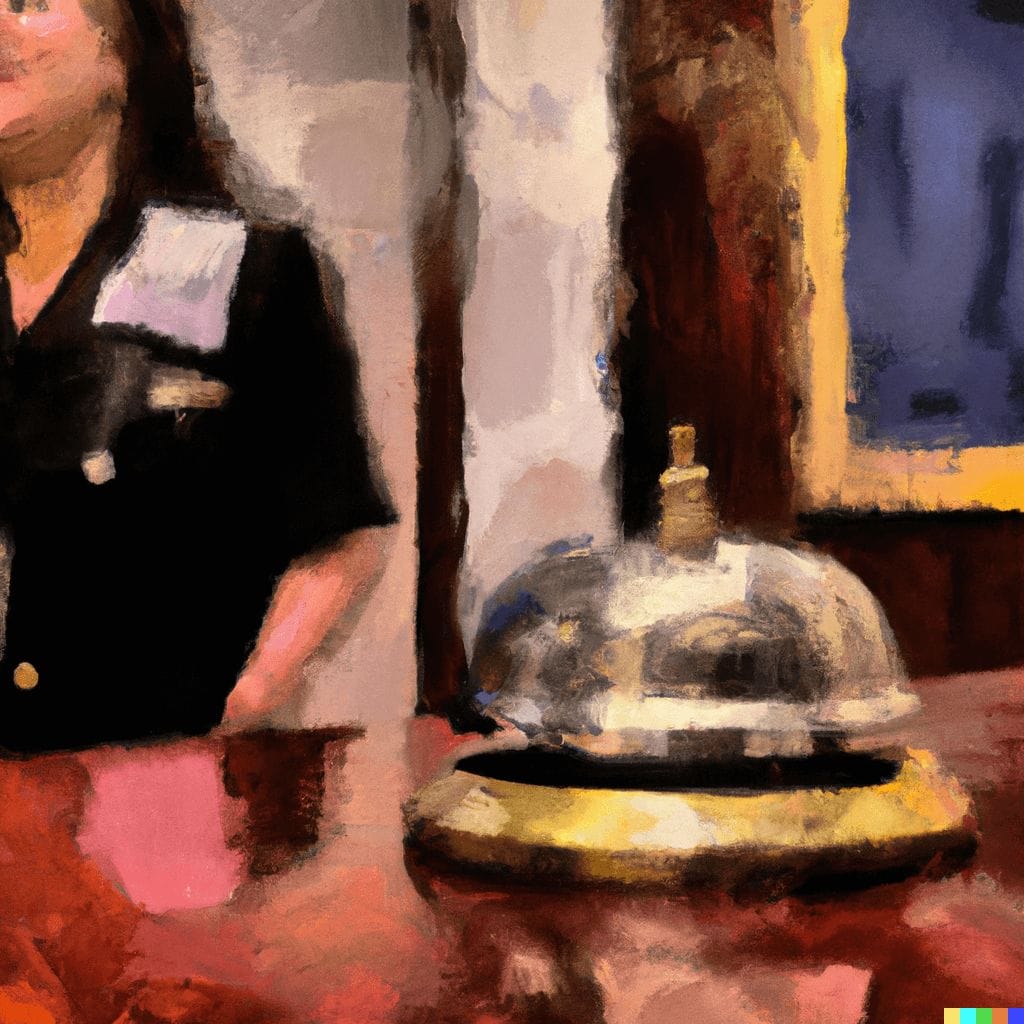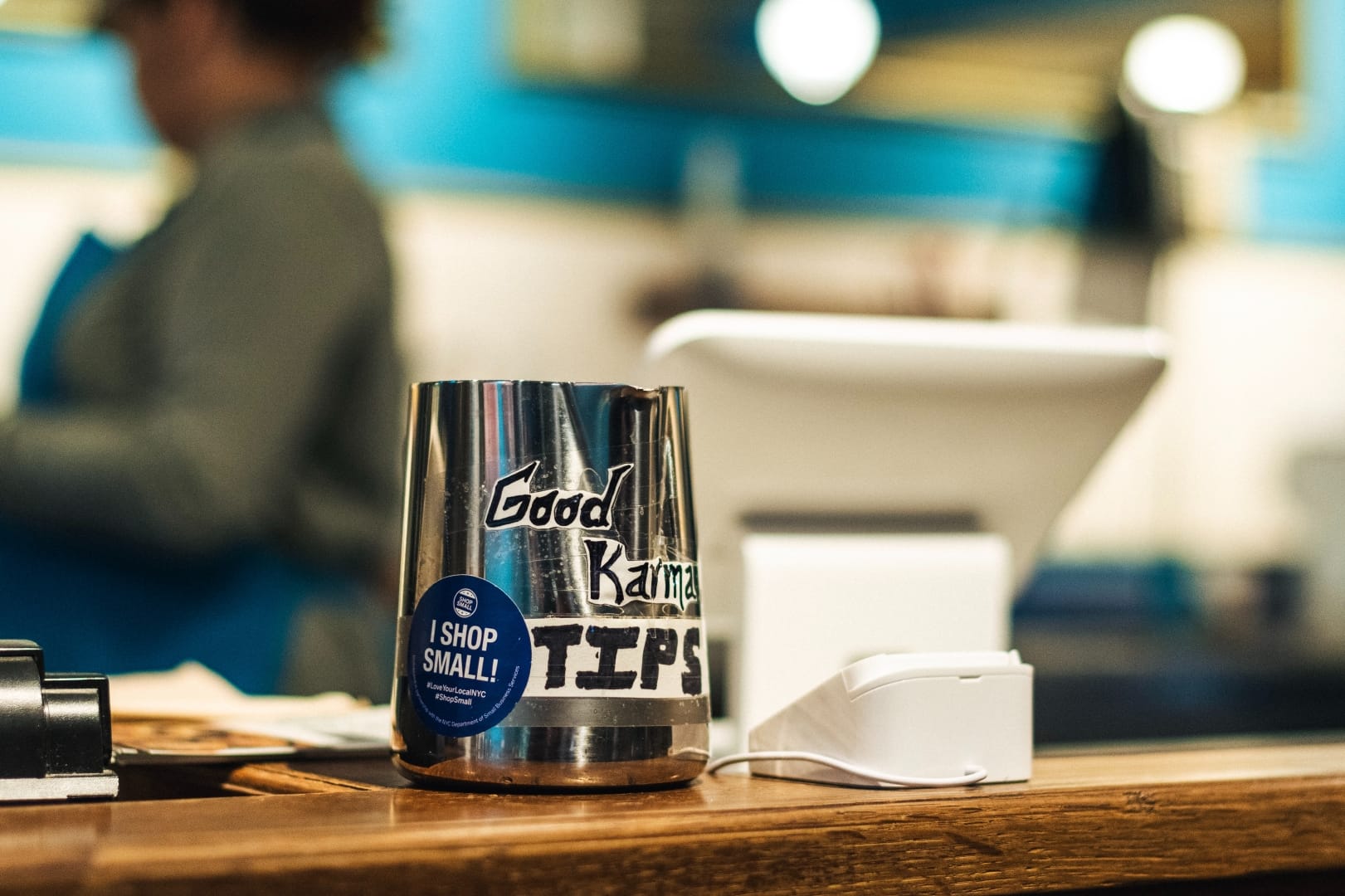Summary
- 77% of diners say that quality of service influences how much they tip, which begs the question: should tips be pooled and distributed to the whole team?
- Tip pooling is an arrangement wherein tips earned are pooled together and redistributed among all eligible restaurant workers.
- Payroll software simplifies tip and wage calculations, helping employers stay organized and compliant
Tipping in restaurants isn’t just about the food; it’s about the entire dining experience—and it relies on teamwork. Serving food is as important as cooking dishes, cleaning plates, and resetting tables. While a study shows that 77% of diners say the quality of service influences how much they tip, it’s worth considering: should tips be shared beyond servers and also among the broader team of restaurant employees that contributes behind the scenes? After all, a good experience is a collective effort involving both front-of-house (FOH) and back-of-house (BOH) staff. This is where tip pooling comes in.
Tip pooling in restaurants defined
Everyone is familiar with the traditional tipping model: diners pay a voluntary but socially expected tip of at least 15% for good service. This is usually a cash tip directly handed to their server and kept by that server. Tip pooling is a formal arrangement that allows the restaurant to collect all gratuities and then redistribute the total amount of tips between workers.
Tip pooling is based on the idea that a gratuity is given for the overall dining experience, not just how quickly and politely the food was served. This means kitchen staff, bartenders, bussers, and front-of-house hosts all share in the reward.
The way the mandatory tip pool is handled can vary from restaurant to restaurant. There is no legally mandated method of working out how tips are pooled. Common ways of working out the tip split include:
- Percentage-based pooling – Tips are pooled and redistributed according to pre-established percentages.
- Role-based allocation – Tips are split based on roles, e.g., 60% to servers, 20% to bussers, and 20% to bartenders.
- Hour-based distribution – This method is based on the number of hours an employee worked in a shift. The employee will get tips that are proportional to the hours they worked.
- Shift-based pooling – Tip pools are created on a per shift basis, and only employees who worked a particular shift are eligible to get tips from the pool.
- Team-based pooling – Tips are distributed among teams. For instance, FOH workers get 70% of the pool, while BOH staff receive 30%.
- Points system – Staff earn points based on their roles, experience, or contribution. At the end of the shift, points are totaled, and each point is assigned a dollar value calculated from the total tips earned.
- Equal distribution – The most straightforward method wherein all tips are pooled and divided equally among all eligible staff. For instance, a pool of $1,000 is equally split among 10 employees. Therefore, each one takes $100 each.
- Combination or hybrid method – It’s the employer’s prerogative how to structure a tip pooling system. Therefore, the option to use a method or two from usual structures may be needed to address specific concerns.
What you need to know about tip pooling laws
Given how central tipping is to the service industry economy, it’s no wonder it’s been a legislative battleground. Federal law governing tips has undergone several significant changes over the years, including who’s entitled to keep their tips, who’s eligible for tip pooling, determining tip-facing occupations, recordkeeping rules for employers, and how tip credits can come into play.
But after all of the rigorous changes, from new rules being enacted to some being repealed, here are the fundamental principles of federal tip laws:
Tips are exclusive to employees
The US Department of Labor strictly prohibits employers, including managers and supervisors, from keeping any portion of employees’ tips, whether the tips are received directly or via a tip pool. They are explicitly not allowed to demand, request, or coerce staff members to surrender their tips outside a legally compliant tip pooling or distribution system.
Tip pooling
Employers can establish a system to manage gratuities and require employees to pool tips. However, managers and supervisors are not eligible for tips from these pools. It could include, however, non-tipped employees such as kitchen staff as long as the employer doesn’t take a tip credit and pays employees the full minimum wage.
Tip credit
Employers can pay employees less than the federal minimum wage through a tip credit. For instance, employers can pay as little as $2.13 per hour if tips bring the employee’s total earnings to at least the federal minimum wage.
If an employee performs dual roles, the employer can only take a tip credit on the job that has tipped tasks such as serving customers. For instance, an employee is working as a server and a janitor. In this case, the employer can’t use a tip credit for the hours the employee performs janitorial work because that’s not a tipped job.
Service charges
Unlike tips, service charges are mandatory fees added to a client’s bill and are considered as property of the employer. Should restaurant owners choose to allocate a portion of the service charges to employees, those amounts would be classified as wages, and not tips. However, employers can use those amounts to meet federal minimum wage requirements under the FLSA.
Some states impose additional rules around service charges. For instance, in New York, restaurant owners must explicitly disclose how service charges are allocated in contracts, invoices, or menus. If a portion of the service charge will be shared with employees, the allocation must also be disclosed.
The main thing to remember is that unless a formal tip pooling system is in place, tips belong to employees, not the restaurant. While restaurants are allowed to bring in a tip pooling system, best practice says it should be done with the employees’ agreement and clearly explained in their contracts.As always, with any labor legislation, there may be local or state laws relating to gratuities. For instance, California doesn’t allow employers to take tip credits. Be sure to check your exposure or seek legal advice in this area before proceeding with any decisions regarding the income of tipped employees.
The pros of tip pooling
The main benefit of tip pooling is that it addresses the imbalance between front-of-house servers and other staff by pooling gratuities and disbursing them to all staff. Although well established, traditional tipping is an erratic way of being paid. Tips can also be vulnerable to discrimination since they rely entirely on social expectations rather than legislation. This means that even for serving staff who benefit from tips, the amount earned can vary wildly depending on myriad factors.
Tips can also create an “us and them” situation between front-of-house (FOH) and back-of-house (BOH) staff. Most restaurants experience this friction, where cooks and bussers are out-earned by servers simply because one group earns tips and the other doesn’t. Hiring kitchen and other backroom staff is easier when they’re not at a disadvantage compared to tipped front-of-house workers.In theory, tip pooling can strengthen teamwork by encouraging a greater focus on the overall dining experience.
The cons of tip pooling
Anything that impacts how much money staff takes home each shift is bound to cause friction, and tip pooling is no exception. As you’d expect for a system that takes money from one group and hands some of it to others, it’s divisive. Implementing such a system can introduce negativity into the workplace if handled poorly.
While some locations have found a workable tip pooling model, with buy-in from all staff, there is a strong chance that it simply takes a small pool of money and spreads it more thinly. Research has shown that although diners expect and prefer their server to keep all of their tips, a tip pooling system doesn’t change the amount people tip.
Tipped employees mostly rely on their tips more than their contracted salary to make ends meet. This means anything that cuts into that income can have an immediate impact on their quality of life and, by extension, their engagement at work. Introduce a tip pooling system to an existing restaurant, and your best front-of-house staff, the ones used to earning the most in tips, may well leave for a restaurant that uses traditional tipping to maintain their income level.
Tips for implementing an effective restaurant tip pooling system
Implementing a tip pooling arrangement is a balancing act. When done right, it can foster teamwork and fairness. However, if mismanaged, it risks impacting employee retention and morale. If you believe every team member contributing to the guest experience deserves a a part of the tip, getting it right from the start is crucial. Here are some practical tips for building a tip pooling system:
Create clear and fair policies.
While there’s no specific FLSA-mandated structure to building a tip pooling system, creating a system that works for your team is essential. Employers must develop a policy that is fair to all employees. Start by assessing your operations and determining the best distribution method. Should tips be allocated based on roles, hours worked, or shifts? Outline clear factors for determining allocations to ensure everyone understands and agrees on the system’s fairness.
Monitor, evaluate, and adjust.
Like any company policy, your tip pooling rules should not be set in stone. Since they directly affect employees’ wages, reviewing them regularly is crucial. Is the system meeting your team’s needs? Are there gaps in fairness or clarity? Gather feedback and make adjustments as needed to enhance employee reception or ensure compliance with legal updates.
Understand the legal framework.
While you have the flexibility to structure your tip pooling policy, it must comply with federal and state laws. It is essential to understand the Fair Labor Standards Act (FLSA) and any applicable local regulations regarding tip pooling and wage distribution. Maintaining compliance ensures that your system is both fair and lawful, helping you avoid costly penalties.
Communicate with your employees.
Transparency is vital to successful implementation. Explain the policy to your employees during onboarding and provide them with accessible resources for reference, such as an employee handbook. Managers should also be prepared to address questions or concerns along the way.
Use technology to stay on top of tip pooling calculations
Managing a restaurant involves many complexities, and handling payroll for various staff and teams is challenging on its own. Adding tip pooling to the equation can make it even more demanding.
The good news is that technology can simplify the process, ensuring that eligible employees receive the tips they rightfully earn.
Workforce.com is a system that can do that and more. Here are some of the ways it can help you manage tip pooling and wages.

- Classifying employees – Workforce.com automatically knows who’s entitled to what. Whether your tip pooling system is based on roles, shifts, or hours worked, it can make accurate and automated calculations based on an employee’s qualifications. This can be easily set as early as onboarding and updated anytime on the system.
- Centralized records – Employee profiles created during onboarding sync across scheduling, payroll, and attendance systems, reducing errors and duplication. That means there’s only one source of truth for wages and tip calculations.
- Automated tip pooling – Tips can be pooled and distributed automatically, in line with your chosen method, and integrated directly into payroll. Workforce.com even allows integration with your POS to calculate and share tips seamlessly.
- Streamlined payroll – Simplify payroll calculations, even with pooled tips. Payroll computations even with pooled tips are simpler. Workforce.com’s payroll system automates calculations, from hourly wages, deductions, and tip distributions, using employee data and predefined rules. No complications every pay period, just accurate wages, all the time.
- Recordkeeping – Employers must adhere to recordkeeping rules regarding tip pooling. Stay audit-ready with detailed records of tip pooling distributions. Workforce.com ensures compliance and provides accessible data for employee inquiries or regulatory checks.
If implementing a tip pooling system feels overwhelming, let Workforce.com simplify it. It can help you comply with wage laws while streamlining the entire process. Ready to see how Workforce.com can help you with tip pooling, payroll, and managing your restaurant team? Book a demo and see it in action.






